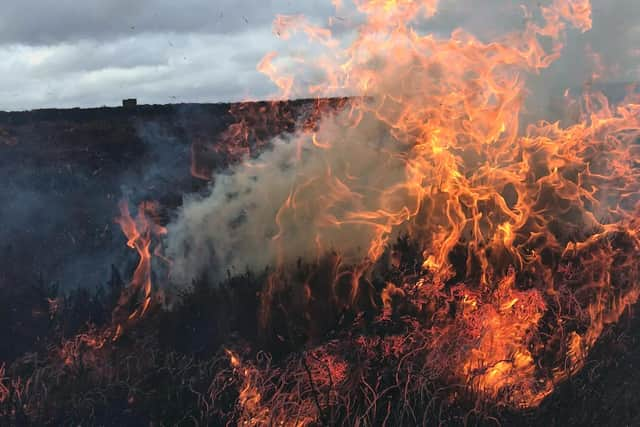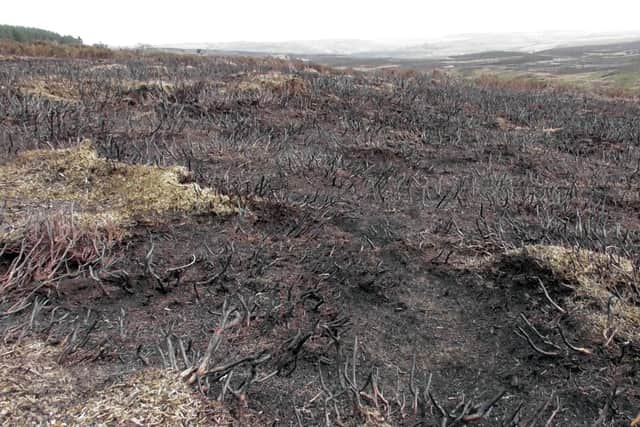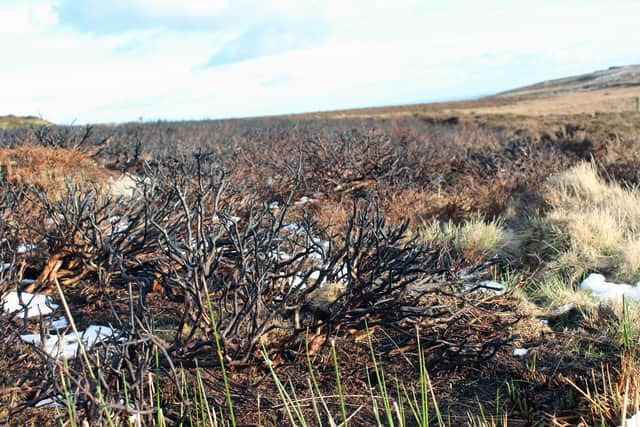Climate change: 'Intense heather burning' prompts complaints about smoke pollution in picturesque Sheffield valley
and live on Freeview channel 276
It follows intensive burning of heather near Bradfield which prompted complaints about smoke pollution in the Loxley Valley.
The environmentally harmful practice is done to make way for fresher heather that grouse reared for shooting feed on.
Advertisement
Hide AdAdvertisement
Hide AdIn a joint letter sent to the secretary of state for environment, food and rural affairs, councillor Terry Fox, leader of the council, and councillor Alison Teal, co-operative executive member for sustainable neighbourhoods, wellbeing, parks and leisure, said there had been more than 30 large fires set on moorland close to Sheffield in one week in October.


They said: “Every fire set this season signals the Government’s unwillingness to protect the region’s carbon-rich peatlands and nearby communities from damage in the challenge to tackle climate change.
“As Defra has acknowledged, ‘burning is damaging to peatland formation’ and ‘makes it difficult or impossible to restore these habitats to their natural state’.
“Not only is peatland vitally important for the sequestration of carbon. Peat will hold close to 20 times its own weight in water. This makes it particularly helpful for Natural Flood Management, as well as providing a natural form of water purification.
Advertisement
Hide AdAdvertisement
Hide Ad“Burning moorland prevents peat restoration and therefore increases the risk of flooding in Sheffield.


“The practice of moorland burning must end entirely for the health and protection of nearby communities, and the commensurate benefits of carbon reduction for the planet.”
Why is grouse moor burning bad for the environment?
It is estimated that peatlands across the nation store more carbon than all of the forests in the UK, France and Germany combined, the Office for National Statistics said.
Research by the University of Leeds found that burning grouse moors degrades peatland habitat, releases climate-altering gases, reduces biodiversity and increases flood risk.


Advertisement
Hide AdAdvertisement
Hide AdAnalysis of Government data by the RSPB also showed that grouse moor burning has become the biggest threat to some of the country’s most important conservation sites.
What are the current rules on grouse moor burning?
The Climate Change Committee recommended a complete ban to protect peatlands from further damage but the Government has not yet acted on this.
The Government did acknowledge the damage caused by the practice and introduced a partial ban in May.
However, campaign group Wild Moors warned many of Britain’s grouse moors, including those near Bradfield, were exempt from the new rules.
Advertisement
Hide AdAdvertisement
Hide AdLuke Steele, executive director for Wild Moors, said: “It’s past time to put an end to the burning of sensitive peatlands for grouse shooting — a practice which degrades fragile ecosystems, releases climate-altering gasses into the atmosphere and worsens flooding in communities downstream from grouse moors.
“With burning continuing on grouse moors across northern England, we commend Sheffield Council for giving its support for an end to burning to help save the region’s peatlands from further damage.”